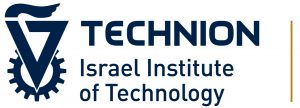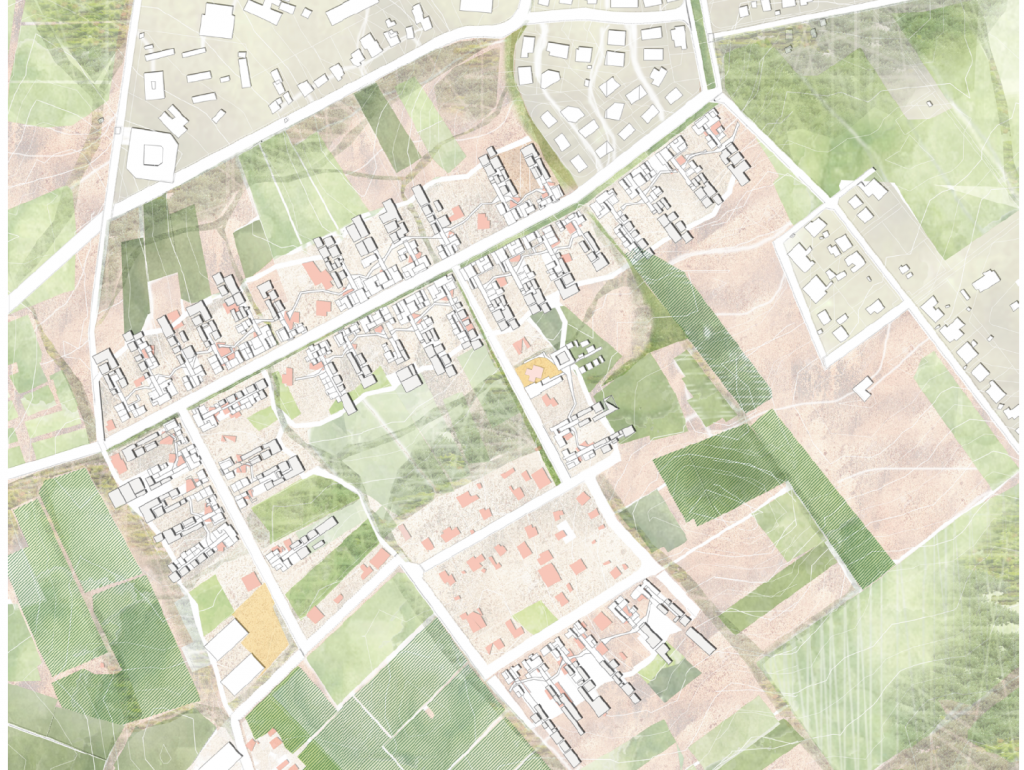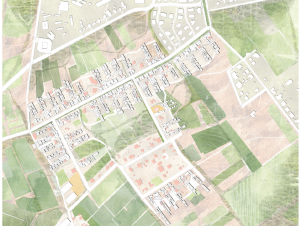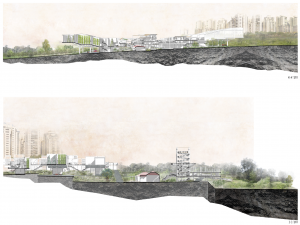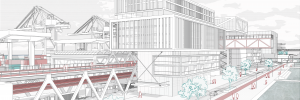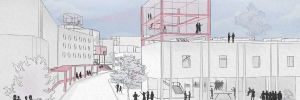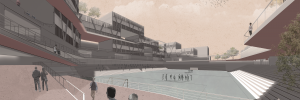Dedicated Space
The moshav served as a tool for promoting a national-geographical process of establishing a Jewish state in Israel. It was designed as a cooperative agricultural enterprise, with a rigid spatial organization containing extensive agricultural areas. Once the State of Israel was established, the moshav began to lose sight of its original purpose. Agricultural practice has waned, and with it the logic behind its spatial organization.
At the same time, a process of urban expansion has also begun. The moshav lands within the urban textures were marked as target lands for accomplishing this urban expansion. Great efforts were made to annex various moshavim to nearby cities, thereby increasing the lands available for cities to expand.
The processes described above have tremendous implications both for the disappearance of open lands in the country and for the ever-declining scale of agriculture in the face of demand, which is increasing as the population grows.
The project seeks to maintain the moshav’s spatial significance as an agricultural producer and to preserve the open lands within its boundaries. In doing so, the project uses the moshav’s spatial logic to create a new layout in the urban texture, with contiguous re-wilded lands, agriculture and ground-adjacent residences.
The moshav’s status turns into shetach hekdesh, an asset dedicated to public purposes, and it goes through a “version update” via new spatial and architectural tools. Via these updating tools, a new infrastructure system will be placed on existing land parcels. Preserving the parcels as the moshav’s building blocks maintains the spatial logic of the moshav, adding to it new-old values concerning nature, agriculture and residence. The new parcel will include all the functions of the traditional parcel, but its layout will be three-dimensional and include more functions, using less ground. The local activities within the parcels will enable the large, meaningful enterprise of allowing the moshav to continue fulfilling its national role.
The moshav’s national role will live on at the country-wide level as well, thanks to the moshav’s layout in Israel. All the moshavim, together, create a network of meaningful “anchors” comprising nature, agriculture and ground-adjacent residences within urban textures throughout the country.
The project is intended for Moshav Ganey Am in Drom HaSharon. Its proximity to Hod HaSharon poses a constant threat of urban annexation. Hence it is suitable for demonstrating the project’s great potential.
